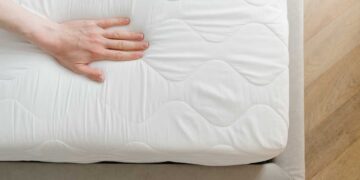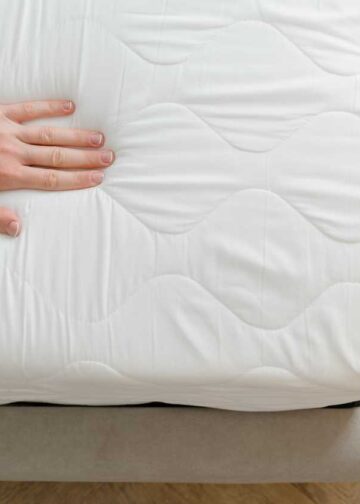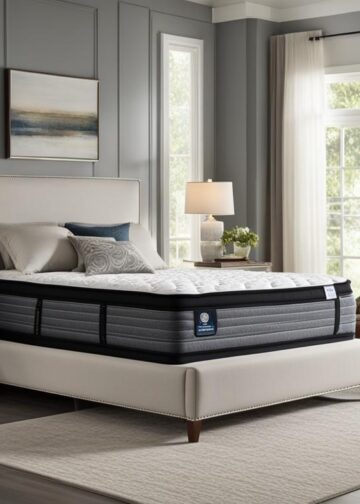Individuals utilize mattress protectors for numerous purposes. They serve to shield the mattress from stains, fluids, spills, and other elements that can damage the mattress. The necessity for replacing a mattress protector varies with different mattresses since the guidance for each protector differs.
To ensure a mattress protector remains effective, consistent and proper maintenance is crucial. You should replace mattress protectors every one to two years if you observe regular wear and tear.
Significance of Replacing a Mattress Protector
- Assists in averting bedbugs, stains, dust mites, and other pests because aged mattress protectors fail to offer protection against these allergens.
- Keeps the mattress in a healthful and almost new condition for an extended period.
- It helps in keeping the mattress warranty intact.
Let’s explore a few tips to decide how frequently you should replace your mattress protector:
Based on its flexibility
The flexibility of a mattress protector is vital for preserving the softness of the mattress. When purchasing a mattress, understanding the flexibility of the protector is important. The flexibility of the mattress protector contributes to a clean and fresh sleeping environment.
Lightweight and flexibility are crucial for this purpose and they offer comfort while safeguarding your mattress for a longer period. To maintain flexibility, it is important to eliminate any odors or germs it may have encountered before your purchase.
Durability of the Mattress Protector
Mattress protectors are an excellent method to enhance the durability of the mattress, allowing you to enjoy a bed that remains like new for longer durations. Opt for a high-quality mattress protector, as it ensures extended durability.
When shopping for a mattress protector, conduct research to find one that is highly regarded overall. Additionally, wash carefully to safeguard your protector against damage such as urine, thereby ensuring its longevity.
There are economical protectors especially beneficial in hospitality settings, where numerous individuals use a single mattress within a year.
When it Fails to Protect the Mattress
If it fails to shield your mattress, it’s a clear indicator that you need to replace your mattress protector. Examples include:
Bed Bugs
Bed bugs are parasitic insects that thrive in mattresses and feed on human blood as they sleep. A protector’s primary role is to guard the mattress against them.
Dust Mites
Dust mites are tiny insects causing allergies throughout the year. If a protector fails, dust mites will colonize the mattress and thrive on discarded human skin.
Moisture
Liquid spills can easily impair your mattress, which often absorbs moisture like a sponge, potentially causing irreversible damage. When a protector no longer prevents moisture penetration, it’s time to consider a replacement.
Before Spots Evolve into Actual Holes
The cleaning process might degrade the protector, causing uncomfortable spots where you lie. When this occurs, replacing the mattress protector is advised.
Using low heat when drying the protector prevents holes, failing which, continuous use becomes untenable.
Conclusion
Replenishing your mattress protector annually is advisable, and if maintenance isn’t effective, it should occur every 4 to 6 months. For prolonged effectiveness, caring correctly for your protector is essential. Opting for the appropriate mattress protector, like a waterproof protector, can significantly extend its usability. A mattress protector is vital as it can prolong your mattress’s lifespan by five to ten years.
Reference: https://mattresshelp.org/best-mattress-protectors/
- “Sleep Like Royalty: Discover the Lucid 12″ Cal King Mattress!” - February 14, 2024
- “Is Your Mattress Past Its Prime? Find Out Now!” - February 11, 2024
- Sleep Better Every Season: Seasonal Sleep Tips - January 26, 2024









